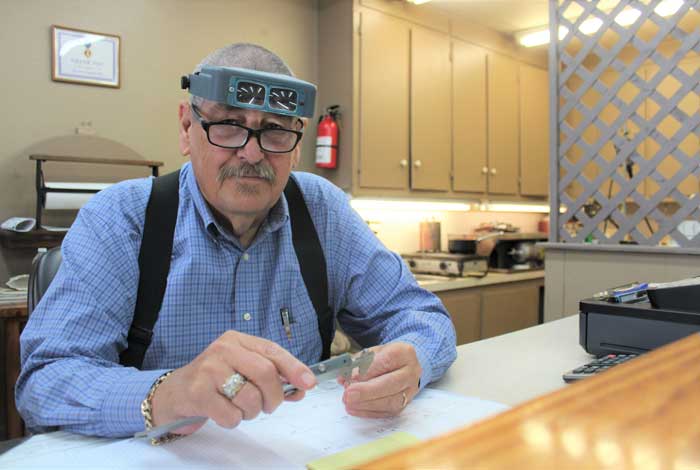AFib Patients Have an Alternative to Long-term Blood Thinner Therapy
November 12, 2020
Lee Skinner has seen his share of heart issues, with a history of vascular disease, including quadruple bypass surgery, chronic atrial fibrillation and several complicating factors including insomnia and chest pain. He also had been falling due to medications he was taking. Finally, the blood thinner he was taking to treat his AFib was causing intestinal bleeding. “After I started having problems, my cardiologist, Dr. Mahjoobi, felt I might be a candidate for the WATCHMAN™,” says Skinner.
 WATCHMAN is a small device, inserted by way of a minimally invasive procedure. It is recommended for people with AFib not caused by a heart valve problem who need an alternative to blood thinners.
WATCHMAN is a small device, inserted by way of a minimally invasive procedure. It is recommended for people with AFib not caused by a heart valve problem who need an alternative to blood thinners.
An evaluation cleared Skinner to receive the WATCHMAN implant. “I was one of the first three patients at Texoma Medical Center to have this done, and Dr. Mahjoobi did an excellent job,” says Skinner.
‘I Feel So Much Better Now!’
Following the procedure, Skinner spent three days at TMC. His follow-up appointment 45 days later indicated that the device was well-positioned, with no leaks or clots detected. “I feel so much better now and am resting well at night. I no longer have the pain in my chest that I had before,” says Skinner. “I also don’t need to take the blood thinners I was on before, nor do I have to get the required monthly lab work. I am happy about that.”
Skinner praised his patient experience while at Texoma Medical Center. “The care that was given and the concern that was shown to me were excellent,” said Skinner, who lives about 20 miles from the hospital and has been coming there for years. “You don’t get that kind of service everywhere.”
An Alternative to Long-term Blood Thinner Therapy
TMC recently became the first hospital in the region to offer the WATCHMAN implant. Patient procedures began in January 2020. The hospital has seen successful outcomes.
The procedure is similar to a catharization or stent procedure, in that the WATCHMAN enters the body by way of a tube inserted into the upper leg. Once placed, the device need not be touched again. Importantly, the procedure enables people to transition off blood thinners such as warfarin. While the blood thinners help to prevent stroke, they also increase the risk of minor and major bleeding, a risk than may increase over time. Blood thinners also require one to take a daily pill (sometimes more) and can have a high ongoing cost.
What Is Atrial Fibrillation?
AFib starts as an irregular and rapid heart rhythm in the upper chambers of the heart. The rhythm change may begin slowly, but can become stronger and more constant as time goes on. AFib doesn't always have symptoms. Many people don't even know they have it. Others may experience one or more of the following symptoms:
- Feeling faint
- Shortness of breath
- Extreme fatigue
- Chest pain
- Heart palpitations
If you feel you might benefit from a WATCHMAN implant, contact your physician. The WATCHMAN is one of the many structural heart procedures offered at Texoma Medical Center.
